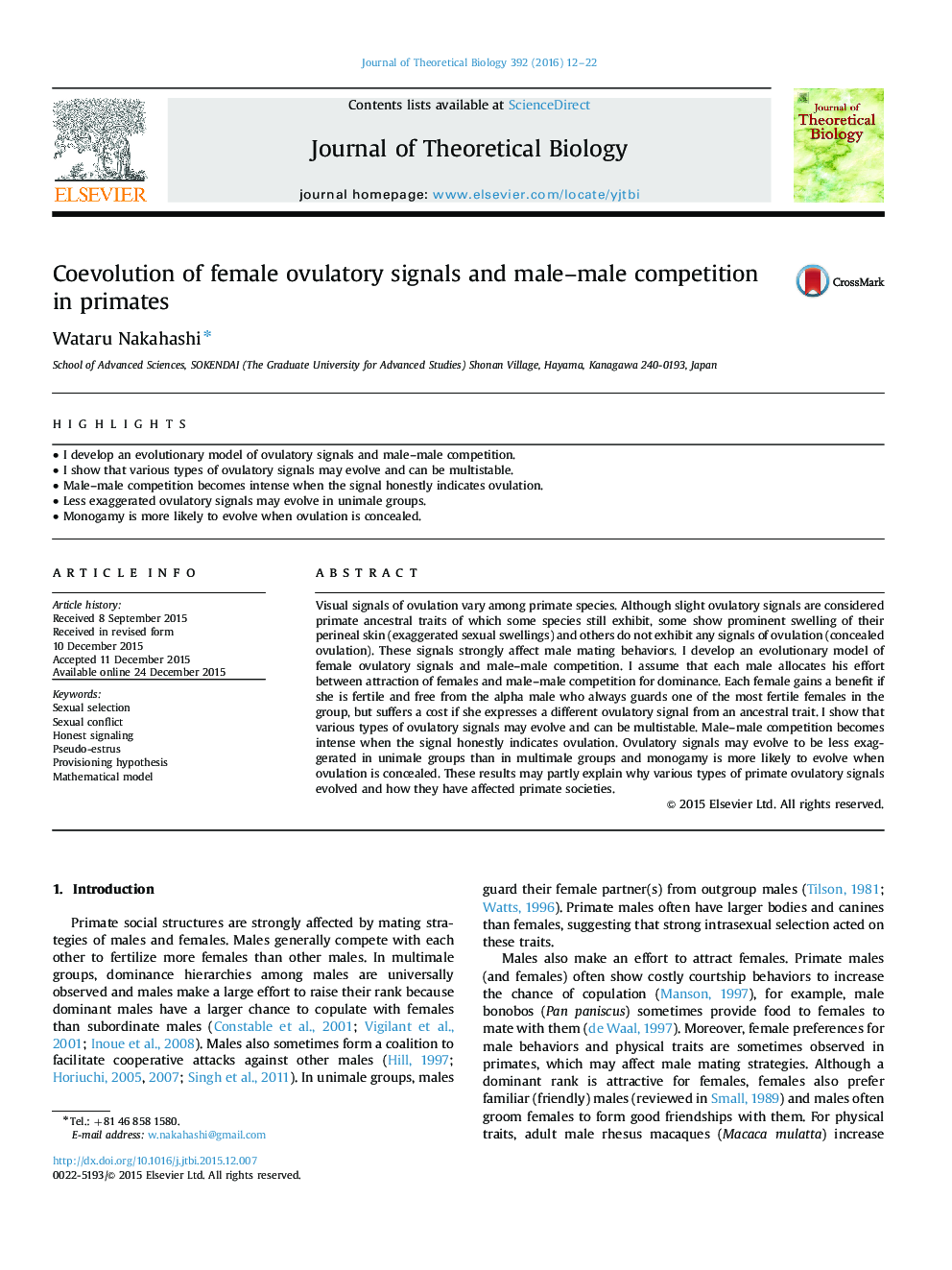| Article ID | Journal | Published Year | Pages | File Type |
|---|---|---|---|---|
| 4495907 | Journal of Theoretical Biology | 2016 | 11 Pages |
•I develop an evolutionary model of ovulatory signals and male–male competition.•I show that various types of ovulatory signals may evolve and can be multistable.•Male–male competition becomes intense when the signal honestly indicates ovulation.•Less exaggerated ovulatory signals may evolve in unimale groups.•Monogamy is more likely to evolve when ovulation is concealed.
Visual signals of ovulation vary among primate species. Although slight ovulatory signals are considered primate ancestral traits of which some species still exhibit, some show prominent swelling of their perineal skin (exaggerated sexual swellings) and others do not exhibit any signals of ovulation (concealed ovulation). These signals strongly affect male mating behaviors. I develop an evolutionary model of female ovulatory signals and male–male competition. I assume that each male allocates his effort between attraction of females and male–male competition for dominance. Each female gains a benefit if she is fertile and free from the alpha male who always guards one of the most fertile females in the group, but suffers a cost if she expresses a different ovulatory signal from an ancestral trait. I show that various types of ovulatory signals may evolve and can be multistable. Male–male competition becomes intense when the signal honestly indicates ovulation. Ovulatory signals may evolve to be less exaggerated in unimale groups than in multimale groups and monogamy is more likely to evolve when ovulation is concealed. These results may partly explain why various types of primate ovulatory signals evolved and how they have affected primate societies.
